How village rebuilt church a mile away 100 years ago
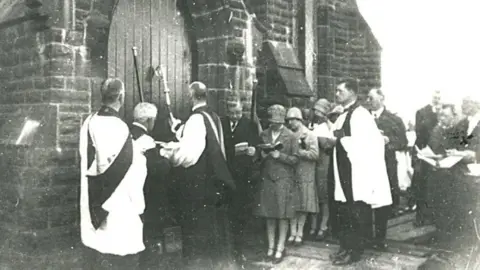 Haslingden Old and New Blog
Haslingden Old and New BlogParishioners are coming together to honour their descendants for their "remarkable feat" in rebuilding a village church stone-by-stone 100 years ago after it was forced to close.
The original church of St Stephen's in Grane village, Lancashire, shut on 24 May 1925 to make way for a new reservoir - leaving villagers with nowhere to worship.
But after huge fundraising efforts to secure more than £8,000, the residents joined forces with contractors to rebuild the church, using horse and cart to move each individual stone to a new site nearer Haslingden.
The Grane Residents Association is staging celebrations including a tea party and concert to mark the "momentous" milestone.
The Grade II-listed church finally closed for worship in 1986 but survives as an antiques showroom and tea room today.
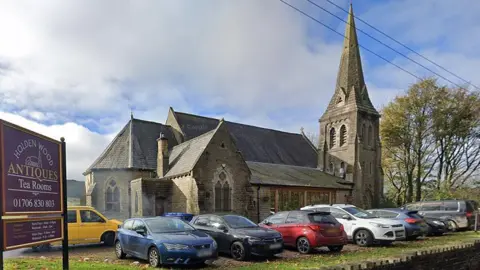 Google
GoogleHistorian Jackie Ramsbottom explained how, in 1883, the Bury and District Water Board began to purchase land and properties to extend its Grane reservoirs.
Over the next 25 years many farmhouses, cottages and three cotton mills were demolished or left to decay and the village all but disappeared.
As many of villagers moved out of the declining area, parishioners felt a more convenient site for their church was needed - and the huge project to move the building began.
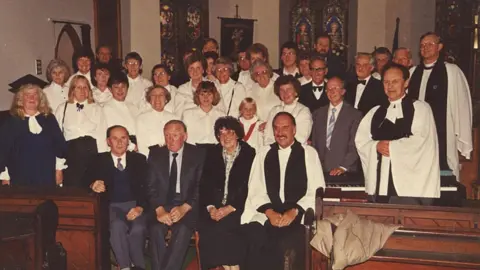 Haslingden Old and New Blog
Haslingden Old and New BlogIn 1921, the Holden Wood Bleaching Company donated a one-acre plot of land just over a mile away along Grane Road.
From 1925 the villagers - known affectionately as "Graners" - spent two years helping to move the stones before the building was reconstructed and eventually re-consecrated on 22 May 1927 by the Right Rev Lord Bishop of Blackburn.
"The church is very much in Graners' hearts," Mrs Ramsbottom said.
"It took so much effort to move it and Graners are still very proud of it today."
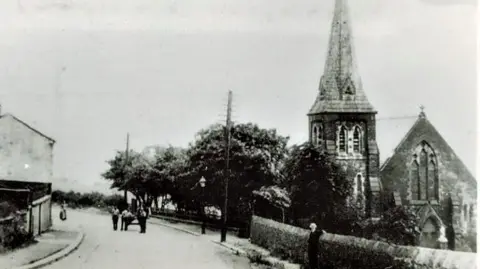 Haslingden Old and New Blog
Haslingden Old and New BlogThe residents association is staging a tea party at the building to mark the centenary celebrations.
It is a particularly apt way to mark the milestone as tea parties were popular among Graners in the 1920s at the time the church was rebuilt.
Mrs Ramsbottom, who was well known herself for hosting tea parties in the 1990s, is helping, too.
She held them for 12 years while working at the Clough Head Information Centre on Grane Road in an effort to reunite the parishioners and descendants of those involved in what she described the "unbelievable" rebuild.
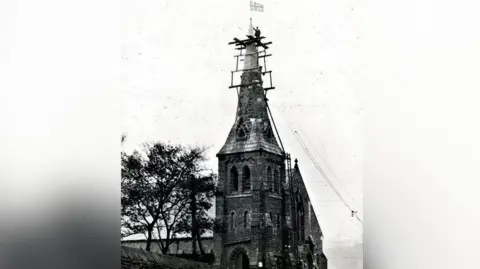 Haslingden Old and New Blog
Haslingden Old and New Blog"It was such a pleasure to meet the Graners over the years," she said.
She now plans to come out of retirement and help host "one last" party alongside some of the St Stephen's parishioners whose descendants were involved.
Andrew Taylor was christened at St Stephens and said his great grandmother, Margaret Taylor, was in charge of collecting money for the church rebuild.
He said it was "absolutely amazing" what the villagers achieved by coming together just a few years after World War One, demonstrating the village's "renowned strength and community spirit".
However, the 45-year-old said he has mixed feelings about the reunion, with thoughts turning to absent friends.
He said "sadly there will be a lot of empty chairs" compared to the tea parties he attended in the 1990s.
"It will be the last opportunity for some to get back together," he said.
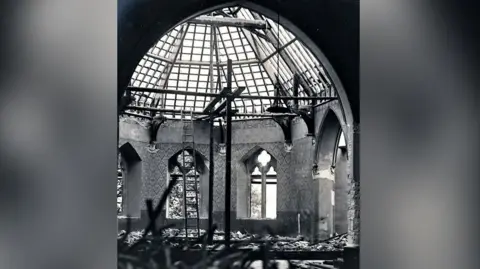 Haslingden Old and New Blog
Haslingden Old and New BlogMrs Ramsbottom is also staging an exhibition at the antiques showroom which runs until Monday, called the History of Haslingden Grane: Places and People.
Haslingden and Helmshore Brass Band will be playing a special concert in the grounds too, between 14:30 and 16:30 BST in honour of the anniversary.
Meanwhile, the Friends of Haslingden Cemetery are planting an apple tree in the cemetery's community orchard in honour of the parishioners.
Mrs Ramsbottom said: "It will be an emotional day. The church means such a lot to Graners."
 Haslingden Old and New Blog
Haslingden Old and New BlogListen to the best of BBC Radio Lancashire on Sounds and follow BBC Lancashire on Facebook, X and Instagram and watch BBC North West Tonight on BBC iPlayer.
